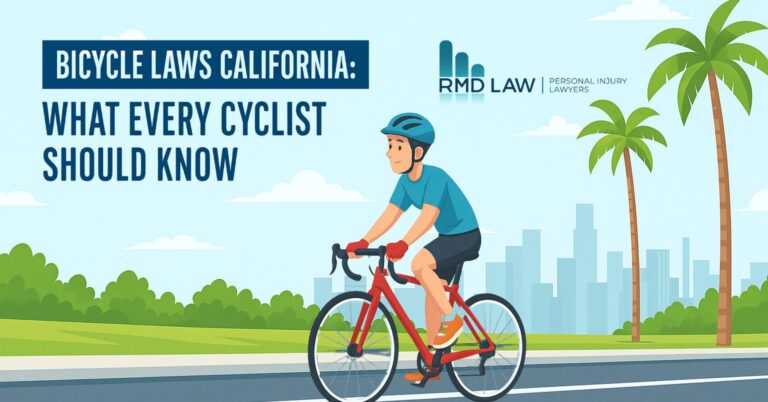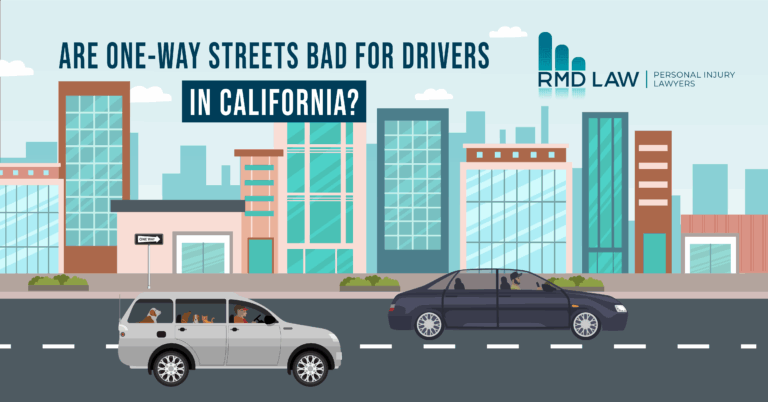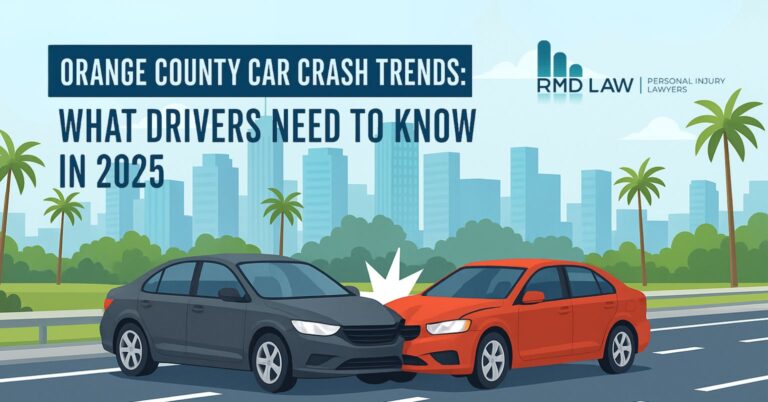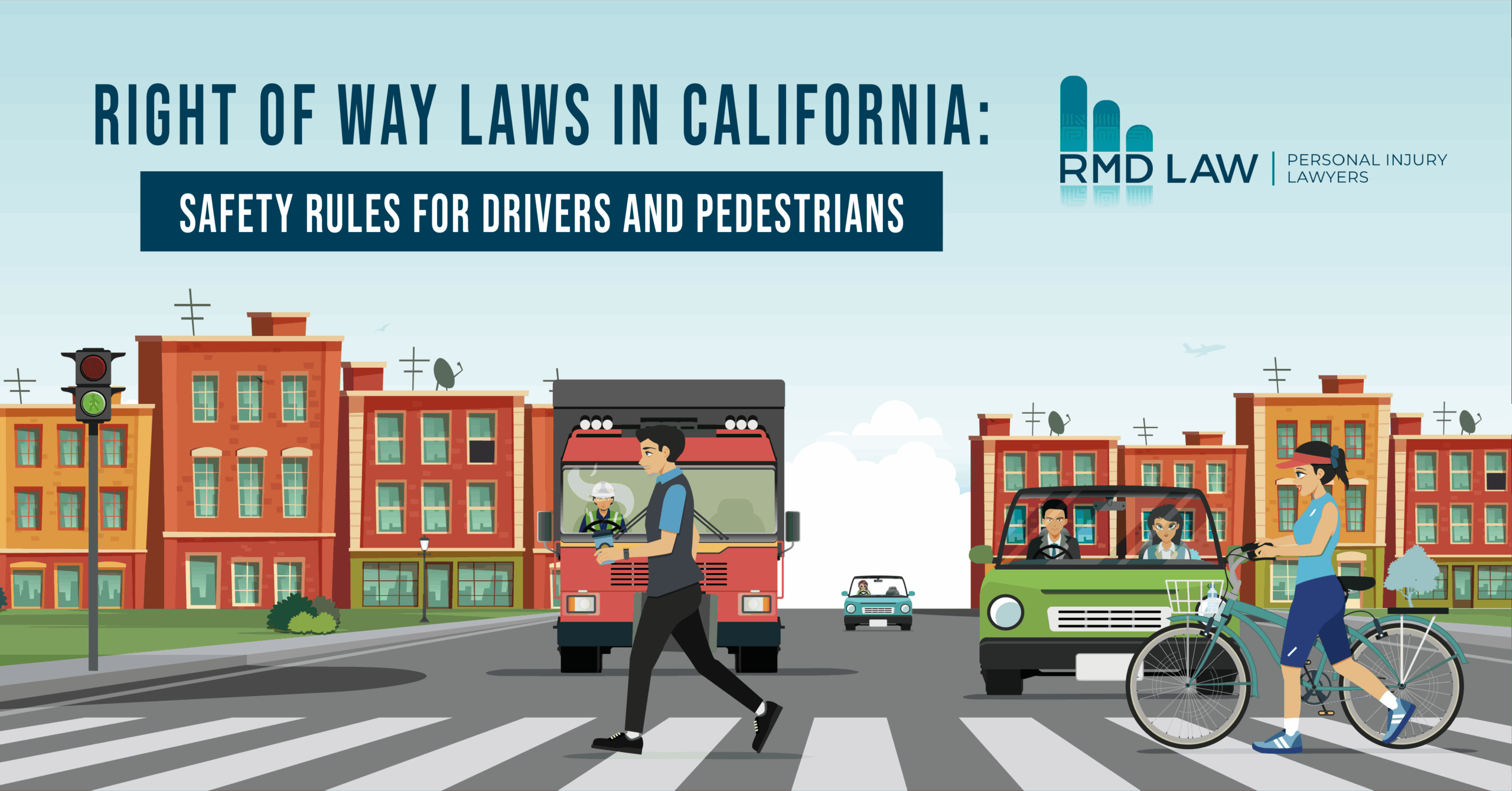
Key Takeaways:
Pedestrians Always Have the Right of Way in Crosswalks, Marked or Unmarked
- Under California law (CVC § 21950), drivers must yield to pedestrians in crosswalks at intersections, whether the crosswalk is marked or unmarked.
Drivers Turning, Entering Roads, or Pulling Out Must Yield to Oncoming Traffic and Pedestrians
- Laws like CVC § 21800, § 21801, and § 21804 require motorists to yield when arriving at stop signs, turning left, or exiting driveways or private property.
Knowing and Obeying Right‑of‑Way Rules at Intersections, Crosswalks, and Driveways Prevents Accidents and Legal Liability
- Understanding when to yield (e.g., stop signs, pedestrians crossing, other drivers on your right) is critical for preventing collisions and avoiding fault.
Who Has the Right of Way in California?
Every time you approach an intersection, step into a crosswalk, or turn out of a driveway, there’s a silent question hanging in the air: Who has the right of way? In California, where bustling streets and busy foot traffic are part of daily life, knowing the answer can mean the difference between a routine commute and a serious accident.
In a report by the California Transportation Injury Mapping System (TIMS), an average of 1,300 pedestrian injuries occur weekly on California roads. Many of these incidents stem from confusion over who had the right of way. Something as simple as who goes first at an intersection can become a life-changing moment in a split second.
Whether you’re a driver navigating crowded city blocks or a pedestrian crossing at a quiet suburban corner, understanding these rules isn’t just about following the law – it’s about staying safe. In this guide, we’ll break down California’s right of way laws, so you know exactly when to yield, when to go, and how to keep everyone around you safe. It will also cover what to do if someone else breaks these rules.
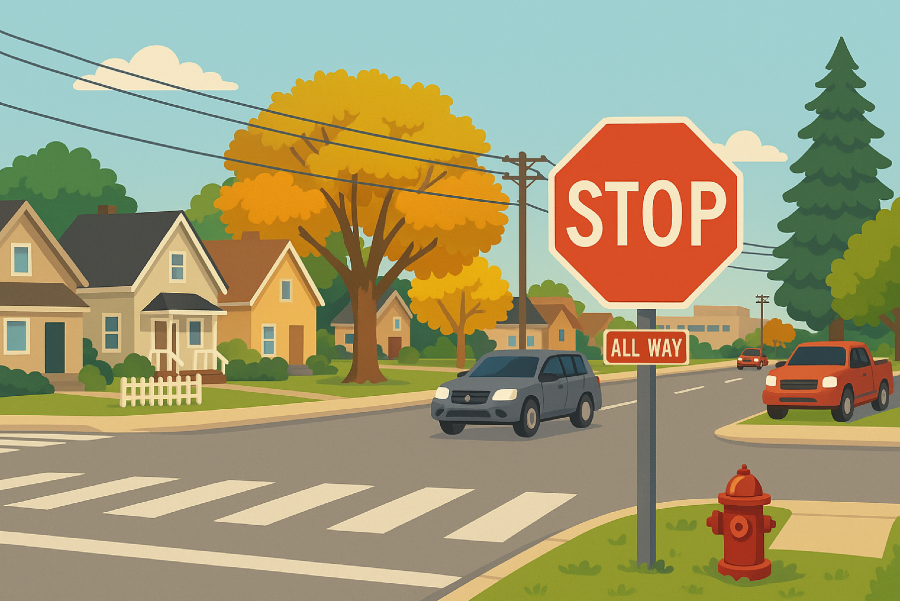
Key California Right of Way Laws Drivers Must Know
“Right of way” refers to the legal right to proceed forward on the road ahead of others. It determines who must yield and who gets to go. Whether you’re behind the wheel or crossing the street, these rules are in place to keep everyone safe and prevent accidents.
Let’s examine the specific right of way laws so you’re never caught off guard at an intersection or crosswalk.
Pedestrians in crosswalks (CVC 21950)
Drivers must yield the right of way to pedestrians in crosswalks — whether marked or unmarked — at intersections. Failing to yield could lead to car accidents and legal consequences for causing pedestrian injuries. If you’re turning right at a red light in downtown Santa Ana and someone steps into the crosswalk, you must stop. Even if they just started crossing, you are legally required to let them pass.
Yielding at stop signs (CVC 21800)
The first vehicle to arrive at the intersection gets to go first. But if you and another vehicle, pedestrian, or cyclist reach the intersection at the same time, you must yield to the one on your right. Let’s say you’re in a residential neighborhood in Fullerton. If a car arrives to your right at the stop sign just a second before you, they go first.
Left turns at intersections (CVC 21801)
Even with a green light, you must yield to oncoming traffic when turning left. Cutting in front could cause a T-bone crash and result in a ticket or, worse, injuries. If you’re turning left onto Chapman Avenue and an oncoming vehicle is heading straight through the intersection, you must wait until they pass.
Entering from private property or driveways (CVC 21804)
If you’re pulling out of your driveway or a parking lot, you must yield to all vehicles already traveling on the road first. Say you’re exiting a busy grocery store on Bristol Street; even if you think there’s a gap, you must wait until it’s completely safe. Those on the main road have the right of way, not you.
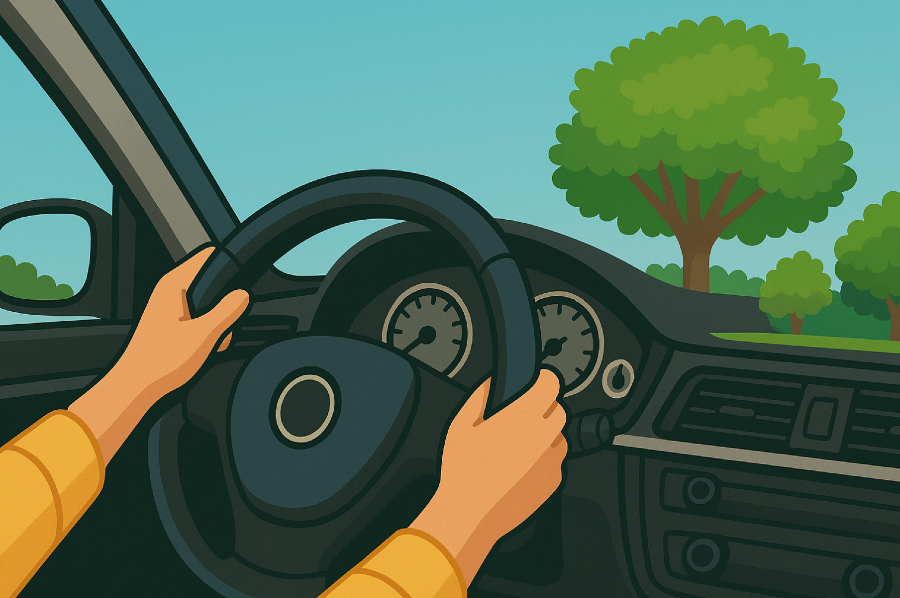
How to Stay Safe on California Roads: Right of Way Tips
Many of these tragedies happened at intersections or crosswalks where someone ignored right of way rules. Let’s take a closer look at what you can do to protect yourself and others.
Safety Rules for Drivers
It is important to follow the rules of the road and put the law into practice in order to keep everyone safe, especially pedestrians. Here are some essential safety rules for drivers to avoid pedestrian accidents in California.
Slow down at intersections and crosswalks
Even with a green light, scan for people on foot or bikes. With right of way laws in place, they become irrelevant if a driver fails to spot a pedestrian already in the crosswalk in time to react safely. For example, a jogger crossing early in the morning might not be immediately visible. Take an extra second to slow down and prevent a tragedy.
Avoid rolling stops
Come to a complete stop so you can properly judge other vehicles and pedestrians. Entirely stopping at a sign gives you time to check for pedestrians, cyclists, or a child chasing a ball into the street. Practice defensive driving in these situations to prevent unexpected hazards.
Watch for pedestrians in poor visibility
Nighttime or even bright sunlight can make it hard for you to see the road clearly. Always assume someone might be there nearby, especially in foggy conditions near bus stops or school zones, like in Garden Grove. Even if you can’t see them right away, it’s better to slow down and stay alert.
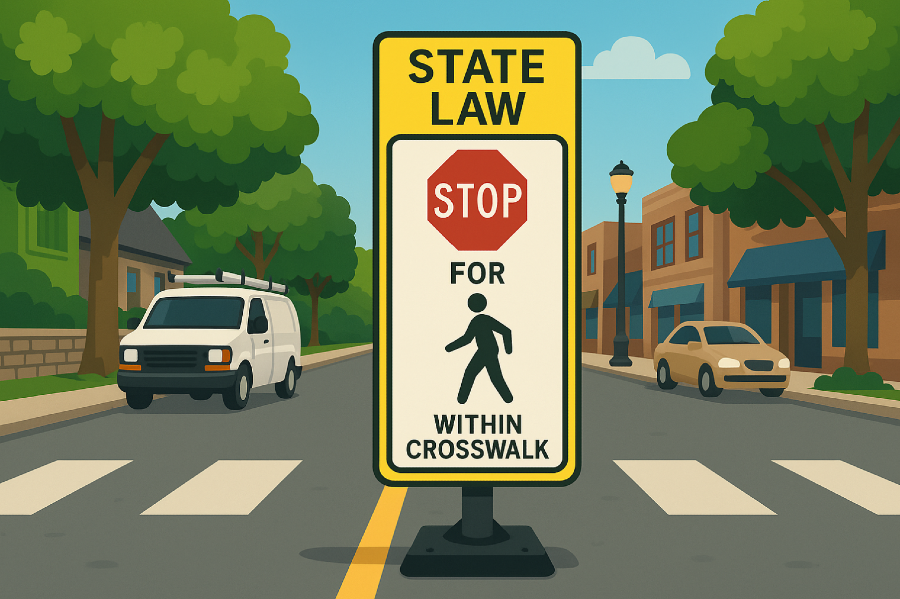
Safety Rules for Pedestrians
These California right-of-way laws prevent confusion and collisions. If everyone follows them, the roads will be safer for everyone. Below are a few things to keep in mind when on the road as a pedestrian:
Use marked crosswalks whenever possible
Drivers are more likely to yield where they expect to see foot traffic. For better protection, stick to marked or signalized intersections. Crossing mid-block in a busy area like downtown Riverside puts you at higher risk than walking the extra 20 feet to a signalized crosswalk.
Don’t assume drivers see you
Wait for drivers to stop or make eye contact with them before stepping onto the road. If you’re walking near a high-speed intersection, like those by freeway ramps, don’t expect every car to slow down. Make sure you’re clearly visible and show that you intend to cross.
Follow traffic signals and signs
Pedestrian signals exist for a reason. With the recent jaywalking law in California, it’s more crucial than ever to know your rights and responsibilities. If you’re tempted to cross on a flashing red hand near a mall exit, think again. It only takes one distracted driver on their phone to cause a life-altering injury.
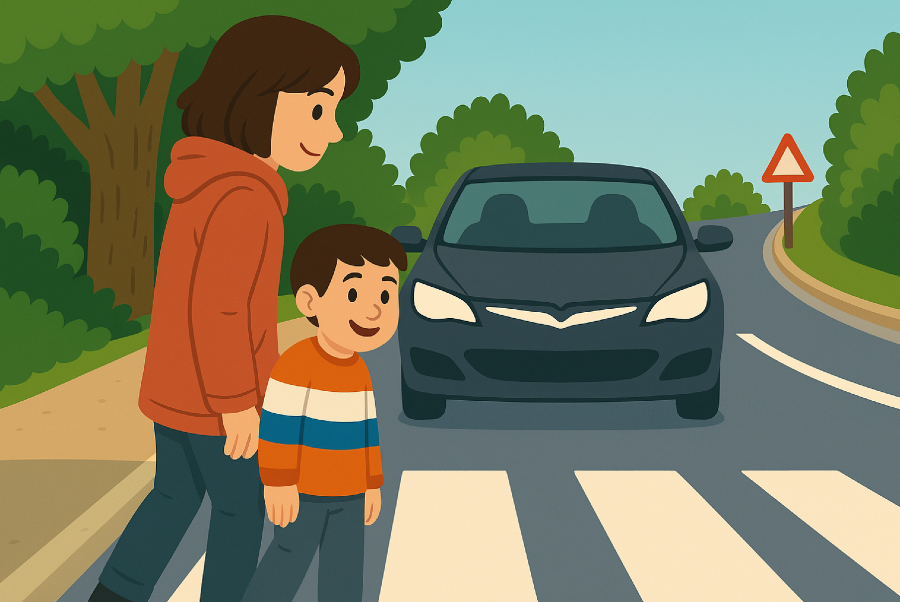
Know the Law, Protect Yourself, and Pass It On
Beyond avoiding tickets, understanding the right of way rules in California is about keeping yourself and others safe. Knowing who has the legal right to go first can prevent devastating consequences, whether you’re behind the wheel or crossing the street.
If you’ve been injured because someone ignored right of way laws, don’t navigate this alone. At RMD Law, we’ll help you find a personal injury lawyer committed to getting justice for victims like you.
Let us fight for the representation and compensation you deserve. Contact us today for a free case evaluation.
- What is the Role of Expert Witnesses in Strengthening Personal Injury Cases? - November 20, 2025
- How Much Will My Insurance Increase After an Accident?: The Hidden Cost of Car Accidents in California - November 17, 2025
- California’s Weirdest Traffic Laws: Rules You Didn’t Know Existed - November 12, 2025

